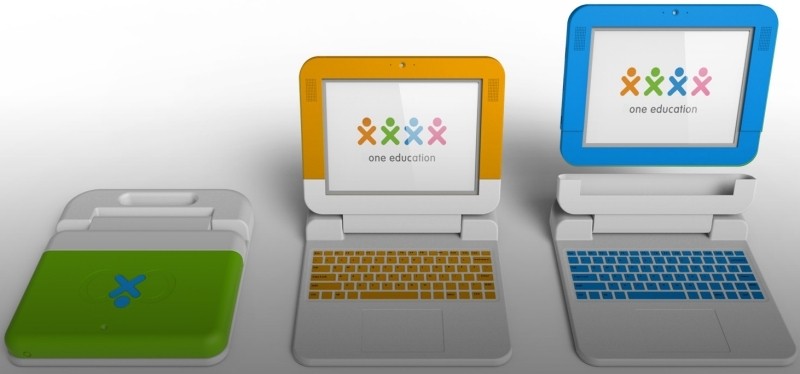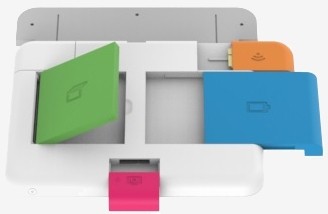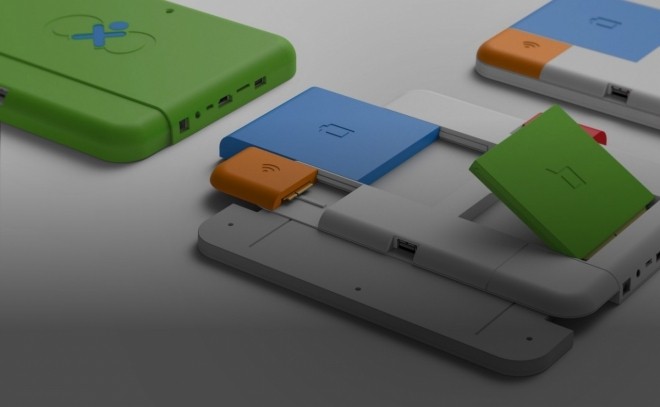
Remember One Laptop Per Child (OLPC), the organization that builds educational devices for kids in the developing nations? They’re set to announce a new XO-branded system soon that looks to borrow a page from Project Ara’s playbook.
Ink, Bits & Pixels was recently poking around on One Education’s (OLPC’s partner non-profit in Australia) website and found something quite interesting. The first of a few images shows what appears to be the rear of a hybrid device with multiple modular components a la Google’s upcoming smartphone platform.

The color-coded components appear to be a CPU module, a battery module, a camera module and a connectivity module. Another photo shows the same modules from a different angle as well as another that could be an interchangeable display.
The publication reached out to One Education and received a reply back from Paul Cotton who said they’ve been working hard on the XO-infinity for the last year and things are finally getting to the point where they can show people. Acknowledging the photos, Cotton said they gives users a pretty good idea of what to expect and why they are so excited.

He concluded by noting an official announcement is coming in the next week or two and jokingly admitted that they need to cover their tracks better.
As the publication correctly notes, the OLPC initiative has struggled quite a bit since it was conceived in 2005. Between setbacks like expensive hardware, short battery life and cancelled products, what OLPC really could use is a partner like Google or Intel.
https://www.techspot.com/news/59806-olpc-set-release-modular-hybrid-laptop-borrows-project.html